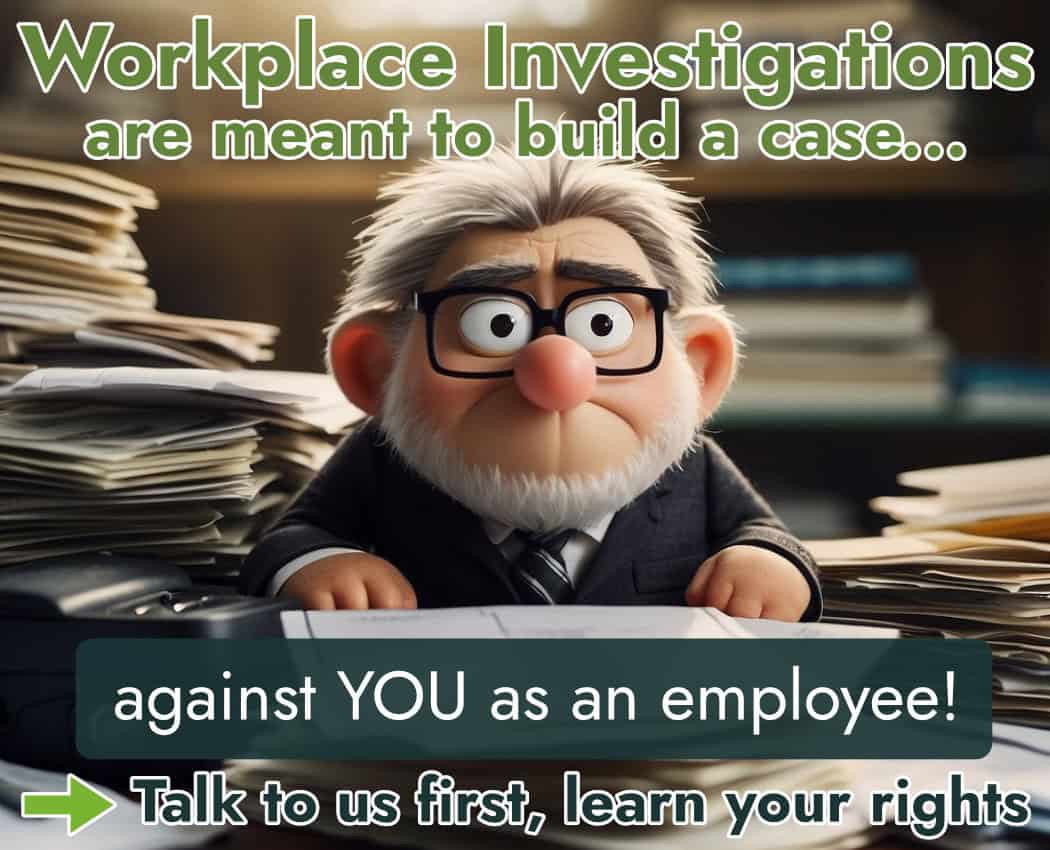
The constructive dismissal laws in Vancouver protect employees from having the fundamental terms of their employment contract changed unilaterally by an employer.
Minor changes to an employee’s role are natural as organizations evolve but if major changes are made without the consent of the employee, it may be construed as constructive dismissal.
In such cases, an employer can be held legally liable in a civil case.
To protect themselves, employers and employees need to be aware of the types of changes that can be made safely to an employee’s contract and those that must be mutually agreed upon.
What is constructive dismissal?
Part III of the Canada Labour Code and the B.C. Employment Standards Act both make it unlawful for an employer to make substantial changes to the terms and conditions of an employee’s employment contract, whether explicitly or implicitly, without the employee’s consent.
If this happens, the employee can legally resign from the company and claim constructive dismissal against the employer.
Under these laws, while the employee has not been “dismissed” as such, his or her role is made untenable by the change of contract, leaving no choice but to resign.
What employer actions can be construed as constructive dismissal?
For a change of contract to be construed as constructive dismissal, it needs to be a significant enough one to affect a fundamental employment term.
If your employer changes your work hours slightly, this is not enough for a constructive dismissal claim. However, if you were forced to move from a day shift to a night shift to retain your position with the company, it could trigger a constructive dismissal case.
Typically, in Vancouver the following five changes are at the heart of constructive dismissal cases:
1. CHANGES IN POWERS AND/OR DUTIES
If a significant change is made to an employee’s duties and responsibilities, causing a loss of prestige or status, it may be a constructive dismissal—even if the job title or salary remains the same.
2. REDUCTION IN HOURS, SALARY OR BENEFITS
Even if the status of the position remains the same but the hours, salary and/or benefits (such as a company car or commissions) are unilaterally and substantially changed by the employer, it could trigger a constructive dismissal claim.
3. THREATS OR SUSPENSIONS
If you are threatened with demotion or unfairly suspended or laid off temporarily, it may be viewed as an employer strategy to force your resignation—and therefore worthy of a constructive dismissal claim.
4. UNFAIR TREATMENT AND WORKING CONDITIONS
If the work environment is made intolerable by hostile actions, such as bullying or harassment and the employer makes no attempt to stop them (or actively encourages the behaviour), this often leads to a constructive dismissal claim.
5. A FORCED CHANGE OF LOCATION
If an employee is required to change location to retain a position, he or she may be able to file a constructive dismissal claim. That is, providing the employee did not move to another location in the same city or was aware of the potential for relocation when applying for the position.
What can an employee do after constructive dismissal?
If an employee is constructively dismissed, there are three main courses of action available:
1. ACCEPT THE CHANGES MADE BY THE EMPLOYER
If the employee does not flag their disapproval of the changes and, instead, reluctantly carries on doing their job under the changed terms, it may be viewed as an implicit acceptance of the changes.
2. REMAIN EMPLOYED BUT REJECT THE CHANGES
For this second option, the employee must notify the employer in writing that he or she rejects the proposed contractual changes but wants to remain employed.
The employer will need to respond to the employee in writing or they will be considered to have accepted the employee’s position on the matter.
This response could be written notice that ends the employee’s contract (with the required notice period or severance pay under B.C. employment law), followed by a new contract that the employee would need to sign to continue employment.
3. REJECT THE CHANGES AND RESIGN
If the employee quits the job and claims constructive dismissal, it must be within a reasonable period to avoid claims of implicitly accepting the change.
What constitutes a “reasonable” period depends partly on the type of change made to the contract and it is generally advisable to take legal advice from an employment lawyer before quitting.
When considering constructive dismissal cases, the court will consider the actions of both the employer and employee. It will also consider whether any reasonable person in the same situation would consider the change significant enough to force a resignation and whether the employer had valid reasons for making the alteration.
How does constructive dismissal differ from wrongful or unjust dismissal?
You know what constructive dismissal is. There are some important differences between this type of dismissal and wrongful or unjust dismissal.
Wrongful dismissal refers to when an employer terminates an employee without providing severance pay, reasonable notice, or pay in lieu of notice, which is required under B.C. employment law.
Unjust dismissal refers to employment in federally regulated offices, for which the Canada Labour Code says that any employee who has completed at least one year’s continuous employment and is not in a management position is entitled to certain protections.
What’s next after constructive dismissal?
If you believe that your employer has acted wrongfully and made significant changes to your terms of employment that you have not agreed to, speak to an employment lawyer before taking any drastic action.
You need to know where you stand legally and will receive advice on the recommended next steps. These cases can be complex and it’s important to obtain legal advice as soon as possible to avoid disappointment.
A Taylor Janis LLP employment lawyer can advise you of your options during a confidential consultation.

Our main hub for British Columbia is located in the heart of Vancouver. We also have a Kamloops Office for interior residents. That said, we serve the entire province of BC. We have the infrastructure to work with any of our clients virtually — even the furthest regions of British Columbia.
Call (604) 423-2646 [toll free 1-877-402-1002] to get routed to the best representative to serve you or contact us online for general inquiries.
We also have a dedicated intake form to help you get the ball rolling. Our intake team will review your specific case and advise you on the next steps to take as well as what to expect moving forward.
Our offices are generally open 8:30 a.m.—5:00 p.m., Mon—Fri.


Tanya Maas
WORKPLACE LAWYER
Tanya has extensive experience in issues relating to wrongful dismissal, notice periods, human rights and workplace investigations. She believes that clients deserve relentless protection of their legal interests within legal and ethical bounds and an aggressive approach to litigation.
PRIVACY NOTICE: Any information you provide to our office — whether your personal information or employment/employer details — will be treated as strictly confidential and will not be disclosed to your employer or to any other third party. So, please be reassured that you can talk openly to our capable Intake Paralegals worry free. Fill out an Online Inquiry or call us now, your information will be in safe and helping hands.
The Legal Review Process by Taylor Janis Workplace Law
- Taylor Janis strives for high-quality, legally verified content.
- Content is meticulously researched and reviewed by our legal writers/proofers.
- Details are sourced from trusted legal sources like the Employment Standards Code.
- Each article is edited for accuracy, clarity, and relevance.
- If you find any incorrect information or discrepancies in legal facts, we kindly ask that you contact us with a correction to ensure accuracy.


